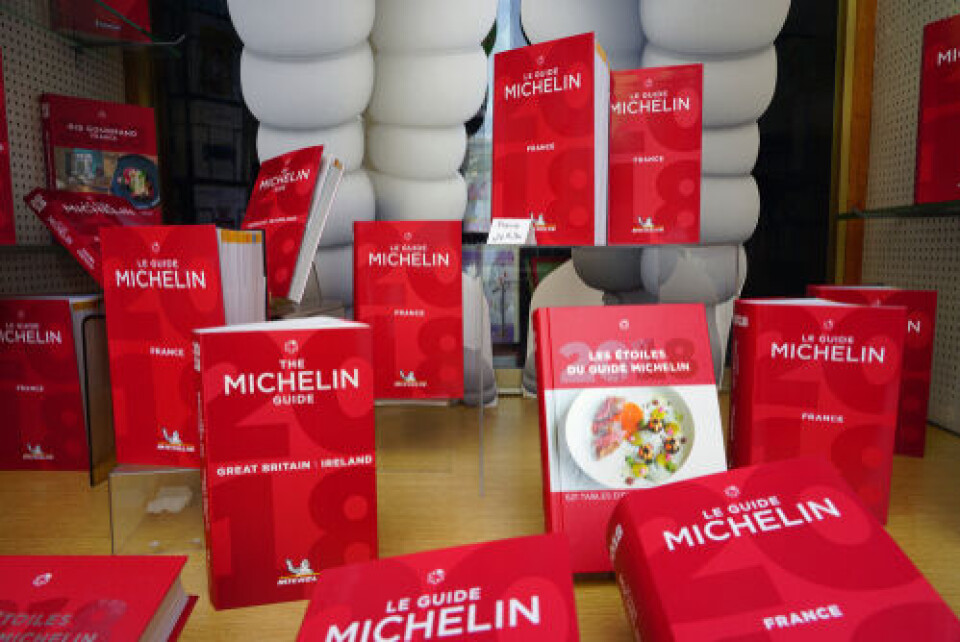-
Many Société Générale customers to be charged additional fees from April
There is some good news for international banking and instant transfers, however
-
Why gas prices in France are rising in April - and by how much
It comes after six consecutive monthly rises. Try these tips to reduce your bills
-
New notaire data suggests easing of Paris property crisis
Property experts have talked of ‘easing pressure’ and ‘breathing space’ after a four-year slump
Controversy grows amid countdown to release of new Michelin Guide
Two highly respected chefs both lost a star, while another has criticised how he was told of his restaurant’s downgrade

It’s a tense moment for the world of gastronomy ahead of the latest Michelin Guide being released next Monday (March 6).
The guide, which bestows stars to recognise a restaurant’s excellence, is often accused of making or breaking careers.
Michelin Guide confirmed on Wednesday that Guy Savoy and Christopher Coutanceau - two highly-respected French chefs - were downgraded from three to two Michelin stars.
Another, Michel Sarran, has criticised Michelin for allegedly not explaining why he had been relegated.
“Michelin Guide is fully aware of the impact of its decision for chefs and restaurants affected by such decisions. The guide nurtures its trustworthy relationship with its readers who expect seriousness and reliability in guiding their choice. These recommendations are not permanent,” the guide said in a press release.
Read also: Top French chef in hot water for adding cheese to quiche Lorraine
What do we know about how the Michelin Guide operates?
The Michelin Guide is very careful about revealing anything about its inspectors.
It says they are “men and women, young and less young, with blonde or brown hair, skinny or chubby, gourmand and passionate”.
The only characteristics they share is that they are independent and professionals of the catering industry, having received training in the hotel or service industry.
Every year, they each travel around 30,000 kilometres, eat around 250 meals and sleep in 160 hotels.
“The inspector books, orders, eats, never takes notes and pays the entirety of the bill. It is such anonymity that makes the power of Michelin,” the guide said.
It says that an inspector can occasionally reveal him or herself to a restaurant, if more information is needed.
Michelin Guide inspectors are believed to number between 90 to 110 people, mostly former cooks or ex-students from hotel management school, according to an investigation from French newspaper Les Echos.
Rising controversy
However, the Michelin Guide has raised more controversy over recent years, with several chefs and food critics denouncing its release as an event that has turned more into a marketing event, putting chefs into the spotlight rather than a celebration of food.
The celebrity, prestige and attention a Michelin star provides to chefs and restaurants can sometimes be too burdensome. For example, chefs Joël Robuchon, Alain Senderens, Marc Veyrat or Jean-Paul Lacombe all decided to refuse to pin their Michelin stars.
Others, such as Belgian chef Karen Keygnaert, have been awarded stars in the past but have given them up, instead preferring the comfort of anonymity.
Cultural reference
The prestige and fear surrounding Michelin inspectors is best seen in L’Aile ou la Cuisse (The Wing or the Thigh), a 1976 French movie for which comic actor Louis de Funes is best known.
One scene has him eating in a restaurant disguised as a widow wearing a veil with the owner confusing the Michelin inspector for a casual client, focusing service on the client only by keeping him satisfied with plenty of additional food when the inspector is cast aside with dreadful plates.
Related articles
The French restaurants in TripAdvisor’s Top 10 highest-rated for 2022
Meet Eugénie Brazier - France’s first six Michelin star chef
























